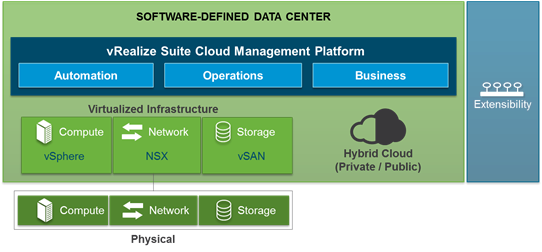After my last VCP6-NV certification achievement, it’s used to spend some words about the exam experience. The contents of VMware Network Virtualization path, differently from the others, are the conjunction points between systems (server/storage) and networking. In fact design, implementation and operation in the data center networking, means know all OSI model levels and how networking is organized inside the data center (East – West) and outside the data center (North – South)
It seems that more and more network admins are now involved in this “special” certification path to complete their knowledge in network data center covering also the new industry trends: flexibility, security in every scenario with the freedom to evolve, and dramatically change the networking layout when business change without changing any physical connection… in few words: the Software Defined Network.
Not just virtualization… and not just networking
One of the hystorical break point between the virtual and the physical world is the network design and operations: automation and flexibility aren’t possible if the networking think to design with “traditional” concepts. But the speed creating VMs must go at the same step of the creation and protection of the network segments. And secuirty must not suffer by throughtput and connection rate provided by the classic centralized firewall.
The Software Defined Data Center “school” is revolutionating the ICT approach: every service is a software aggregation of three elements that must scale linearly and change when at business need. Likewise the uman operation must give way to the auotmation increasing the speed, overtaking the old network limits and guarantee a more deep security. For this reason old networking design and operational decision flow must change! VMware with vSphere, VSAN and NSX are really covering all the datacenter foundations to realize a SDDC environment, using every physical pieces as hardware commodity.

But could virtualization engineers take data center design decisions without networking experiences and professionals? No: networking competence is still needed to design a robust network topology inside and outside data center. VMware Network Virtualization is a learing path that push ICT and TLC guys to learn something more about network and virtualization:
- Network guys will learn virtualization stuffs
- IT guys must learn networking concept in order to deploy and manage NSX elements.
Remember: before sitting to attempt VCP6-NV exam you must pass the vSphere 6 Foundation Exam (or be VCP6-DCV certified)
One guide before deep dive into study… and other useful resources
There’s a lot of literature about NSX, networking and SDN, but first of all, I suggest to read the design guide: https://www.vmware.com/content/dam/digitalmarketing/vmware/en/pdf/products/nsx/vmw-nsx-network-virtualization-design-guide.pdf
Then go ahead with official docs about installation and administration. Just check the pdf link provided in the blueprint: https://mylearn.vmware.com/mgrReg/plan.cfm?plan=95141&ui=www_cert
I suggest also to check the NSX community blog posts from newbie level to troubleshooting. Let me link some useful:
- Official NSX blog https://blogs.vmware.com/networkvirtualization/
- NSX for newbies by Giuliano Bertello (http://blog.bertello.org/2014/10/nsx-for-newbies-introduction-to-nsx-for-vsphere/)
Finally check my study notes (unfortunately not complete but just as useful) and practice with HOL (https://hol.vmware.com)
Wrap up
Exam is not difficult, but, like every professional certification, needs that close to 100% of foundation concepts must be acquired before dive into NSX.
From networking perspective you must know L2 to L4 protocols like ARP, VLAN, routing protocols… Focusing on vSphere, the networking knowledge (in particular on distributed switch features) must be well acquired like required in VCP6-DCV certification.
Then move into NSX features, gaining a deep knwoledge on:
- NSX terminology and installation workflow
- VXLAN mechanism and implementations
- Routing protocols such as OSPF, BGP and IS-IS with DLR, Edge and physical routing
- DFW and service composer
- Troubleshooting by the use of CLI insted of web interface (use HOL labs if you haven’t your own NSX installation!)
- Management features
- Cross-vCenter and 3rd party implementations (also included in HOL)
Last suggestion: sit down, free your mind from other thoughts and be concentrated to the questions… time is enough (even for non-english people) and all questions are written well! That’s all!
